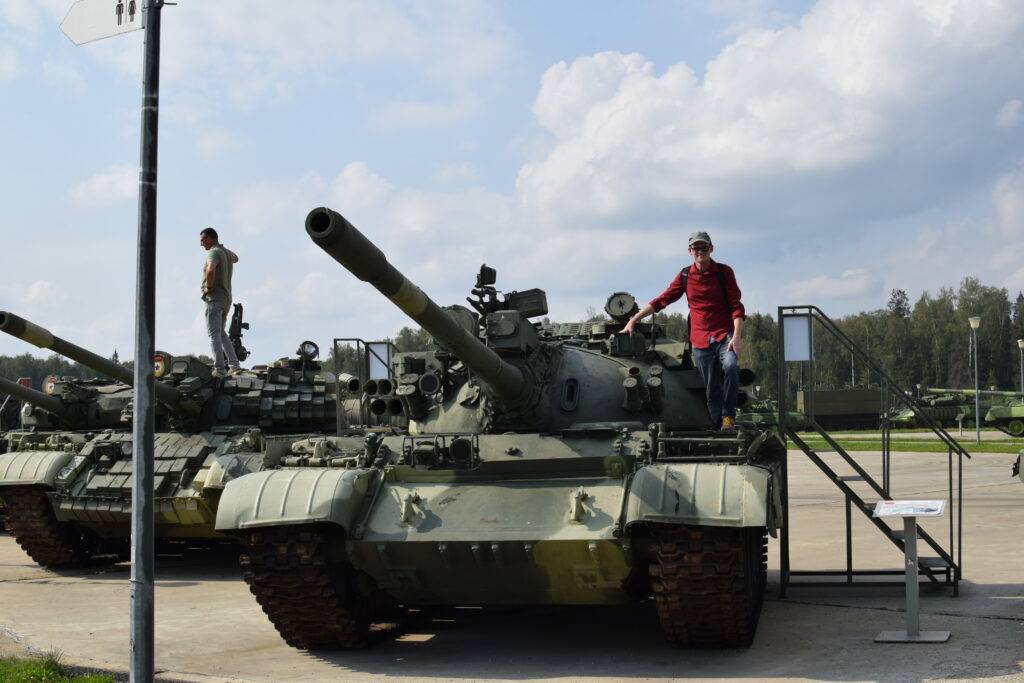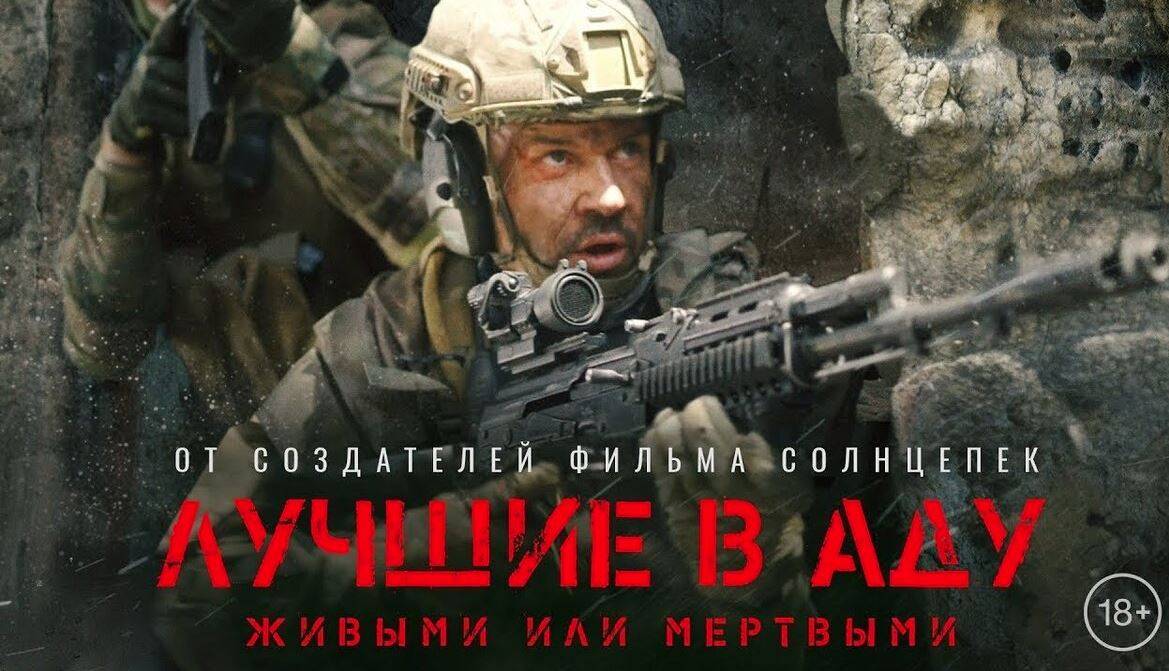I finally got around to watching the 2022 Russian war film The Best In Hell, and was underwhelmed. Not unexpected, but disappointing nonetheless. A thoughtful and poignant Ukraine war film would actually be valuable now. The Best In Hell parades itself as such a film, but underdelivers and focuses on all the wrong things.
The Best In Hell does start with a promising concept; an up close and personal look at a fight between two unspecified Russian-speaking factions, literally the whites and yellows. It is nice to have a Russian-Ukrainian themed war flick that doesn’t portray the “bad” side as oafish cartoon villains, but the movie goes absolutely nowhere with this idea. Another related problem is that there isn’t a plot, which can be a major setback in a movie, unless it’s porn. No matter how novel the underlying concept, every film needs to actually go some meaningful direction, otherwise it’s just another “boy finds naughty step sister stuck in washing machine” type plot.
Unsurprisingly, the movie has a lot of influence from American movies. I wish they at least picked good American movies to be influenced by. “Whites versus Yellows” is the good basis for a civil war movie, and there are good American civil war movies like Gods and Generals or Gettysburg. Heaven forbid, the script writers could have even watched some Soviet civil war-themed movies. Instead, we got another Black Hawk Down clone.
A pitfall that would-be cinematic geniuses invariably ram their productions into is the gimmick. 1917 ruined itself with the pseudo “continuous shot” gimmick and The Best In Hell did something very similar by choosing to have all the action happen in real time. In other words, every second on screen is 1:1 a second “in real life.” There is even an onscreen timer starting at 2:00 and counting down. It is an unnecessary gimmick that handicaps the screenplay. This is a battle that could have taken place over days or weeks, so why deliberately limit it to two hours?
Instead of a wartime drama, we have two hours of action in a single firefight. That’s fine but it’s not really a movie, more like a video game. The characters on both sides aren’t introduced so the audience never finds out who they are and it doesn’t matter when they die. That’s unfortunate because there are several poignant moments in the film. I particularly liked the scene when a Yellow soldier defending a house notice an icon fall off the wall and picks it up, then just moments later is killed by a White soldier who knocks down the icon then respectfully puts it back up just like his predecessor. But we don’t know who any of the involved people are so there isn’t much reason to care.
Though the anonymous and interchangeable nature of the soldiers could have been used as a strength. While I watched the movie I was reminded of an episode from the surreal absurdist adult M-TV animation Aeon Flux. This episode was simply called War. It is only five minutes so is worth a watch.
The Best In Hell could have done something like this. A Yellow hero is killed by a White hero who is himself killed by another Yellow hero and so on in several repetitions. It would be a nice ironic story-telling sequence and The Best In Hell almost did something like this at a couple of points, but I don’t think it was intentional.
Just to add insult to injury, they brought in Alexey Kravchenko, famous for his lead role in Come and See (read my review here) to play the White commander, but had nothing for him to do except narrate the action and stoically look at maps and computer screens. Look, Kravchenko’s character in Come and See, Flora, was a compelling character for very specific reasons. He signed up to be a partisan out of boyish (and selfish) desire to be a hero but ended up a powerless spectator, grows and develops as a person, and at the end of his journey has a moral revelation, that two wrongs don’t make a right and murder doesn’t justify murder. Grown up as a commander, Alexey could feel the same powerlessness because he has no control over what happens on the battlefield, he can only watch. If there was uncertainty about what a commander should look and act like, they could have watched Come and See and copied the commander who’s right there with the boy. All very obvious ideas, but unfortunately there was nobody on The Best of Hell‘s writing team with more than one brain cell.
A two-hour movie could have maybe 15 minutes of action in total and still be face-paced, with the rest of the screentime devoted to character development. But we didn’t get that. Instead, we got what is basically a two-hour commercial for Wagner Group and various Russian-made weapon platforms. So I have to ask who exactly was this movie for? If someone watched this movie and joined Wagner Group or bought a Russian Su-25 then mission accomplished, I guess. After Genya’s accident it is no longer possible to join Wagner Group, but if you’re very impressed by the weapons they are available for purchase.
I would have liked an on-screen character to comment on the absurdity of two groups of guys fighting to the death in the ruins of a Soviet industrial park, but nobody did. A civil war destroys everything you built together so the winner can rule over rubble. But that was just too much introspection to expect from this movie.
Ian Kummer

All text in Reading Junkie posts are free to share or republish without permission, and I highly encourage my fellow bloggers to do so. Please be courteous and link back to the original.
I now have a new YouTube channel that I will use to upload videos from my travels around Russia. Expect new content there soon. Please give me a follow here.
Also feel free to connect with me on Quora (I sometimes share unique articles there).



I think Best in Hell was intended to be a recruitment movie and attract men living ordinary lives but secretly harboring an unfulfilled warrior ethos. Men looking for a venue to be the best that they could be in an existential setting that demanded the most of them. The opportunity to live life at the edge where every minute matters and they are tested to the max. They are rare, but there are such men among us. For them, the slogan “Today is a good day to die” is an imperative and they yearn for that adrenaline rush.
I think you are right but they still could have done better.
I think every great filmmaker started with a turkey and then got better or left the business. Someone should make a movie about the birth and history of Wagner, ending with the fateful last plane trip for Prigozhin. They truly thought of themselves as a warrior elite and many left their blood on Ukrainian soil. Sort of like a real world version of the Dirty Dozen, which is still a relevant classic today.